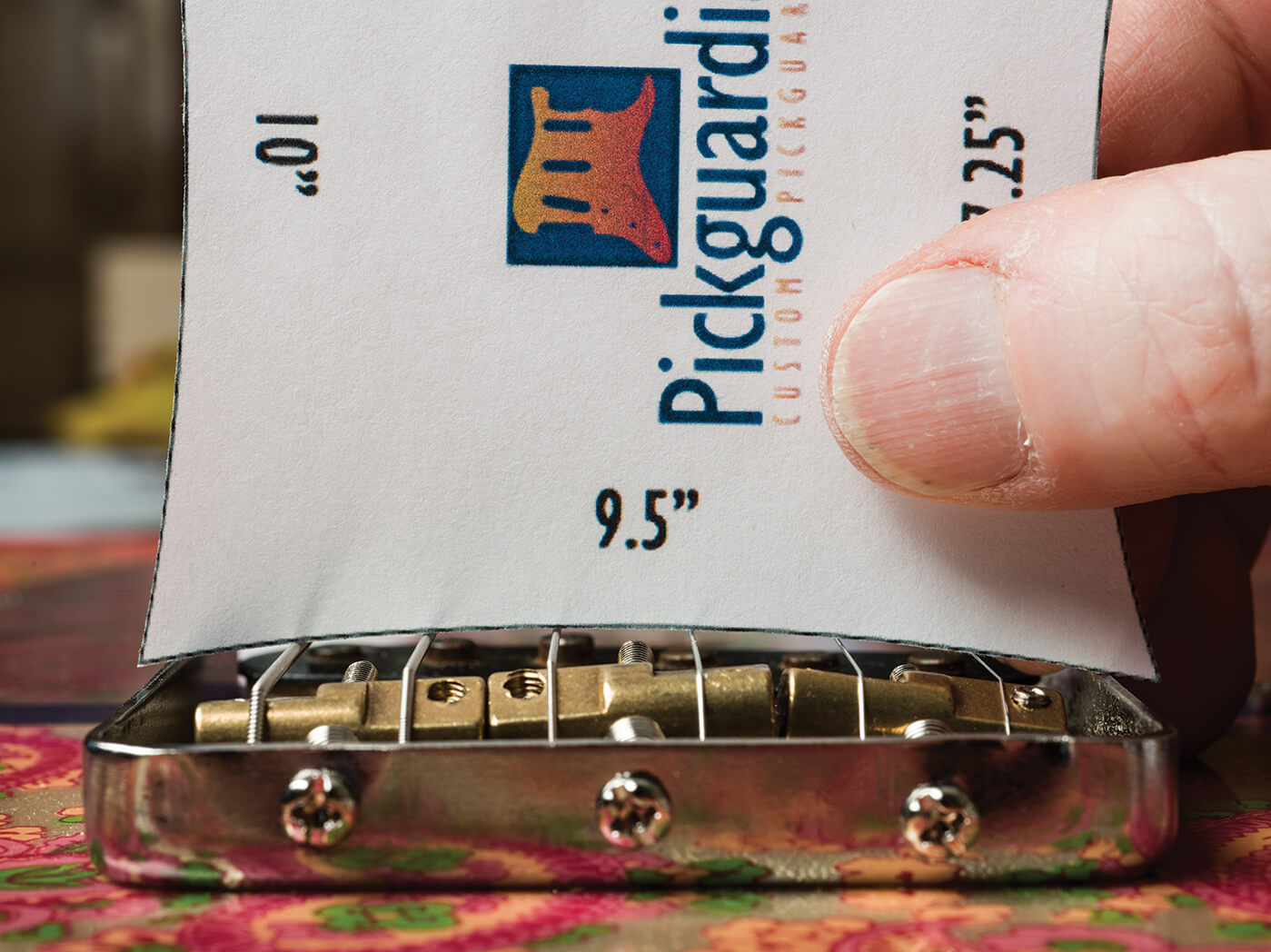Related Tags
How to set string radius
A free online cutout is all you need to get cracking.

Rest the gauge on the two E strings and bring up each of the other strings to just touch the underside of the gauge
Why you need this
- It’s the difference between a guitar that feels OK and one that plays brilliantly
What you need
- Radius gauge
- Allen key or screwdriver
This one really applies only to guitars with saddles that allow for individual string height adjustment. With wrapovers and tune-o-matics, you’re stuck with what you have.
Assuming you have followed the guidelines for setting the saddle height of the high E string, do the same with the low E string. This time, you’re looking for a saddle height that allows the low E to play cleanly all along the neck.
Next, you’ll need a radius gauge – and you can find free ones online. Simply head to this link, print out the PDF document, then carefully cut out the gauges with sharp scissors.
As a rule of thumb, you should match the radius of the strings to the radius of the fingerboard. If you’re uncertain what radius you’re dealing with, simply slacken the strings, pull them off to the sides of the board and use your gauges to figure out the radius of the board.

String the guitar back up and tune it, then place the chosen radius gauge over the strings close to the bridge saddles. The idea is to sit the gauge on the two E strings then raise each of the other saddles one by one to just touch the underside of the gauge. To do this, you may need to drop the height of the A, D, G and B saddles before you start.
Many professionals use metal gauges that slip under the strings, but the top method is close enough for our purposes. In reality, you can set the strings to a radius that’s slightly flatter than the board’s. After all, the strings are at least 0.25 inches above the board at the bridge, so you could set the strings to a 7.5-inch radius to match a 7.25-inch board or 9.75 inches to match a 9.5-inch board.
The gauge will give you a very good starting point. From there, you can make small adjustments based on how the guitar feels to play. Ultimately, that’s always the best way to dial in a great set-up.
Check out more of our DIY guides here.
